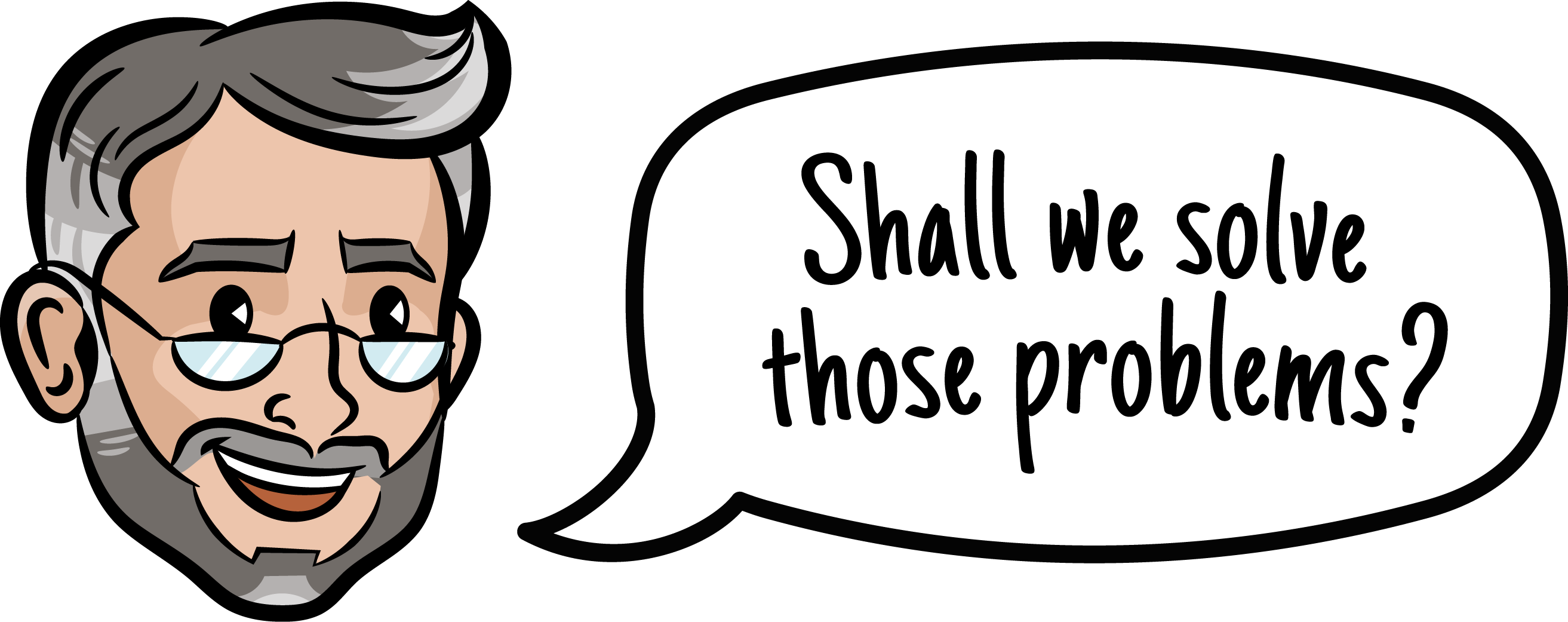Definition: Strategic revenue consulting is a specialized service that helps businesses identify growth opportunities, optimize pricing and packaging, and align sales and marketing efforts to maximize revenue. By combining market insights with data-driven strategies, revenue consultants provide a roadmap for sustainable growth and stronger profitability.
Use it in a Sentence: The SaaS company partnered with a strategic revenue consulting firm to refine its pricing model and uncover new revenue streams, resulting in a significant boost to recurring revenue.
Why it Matters: Without a clear revenue strategy, businesses risk leaving money on the table or misaligning their sales and marketing efforts. Strategic revenue consulting ensures decisions are grounded in data, helping organizations scale efficiently, adapt to market shifts, and achieve long-term financial stability.
Article Summary

- Shift your focus from just features to strategic market positioning to improve form submissions.
- Map your entire customer journey to identify and fix bottlenecks beyond just the top of the funnel.
- Implement cross-funnel metrics to understand how marketing efforts truly impact sales outcomes.
- Align your sales and marketing teams around shared revenue goals for cohesive growth.
Let’s Talk About End-to-End Funnel Optimization
So, you’re drowning in landing page copy, listing every single feature your product has, and wondering why those form submission numbers aren’t budging? It’s a classic case of seeing the trees (features) but missing the forest (the entire customer journey). Effective revenue consulting isn’t just about tweaking button colors; it’s about understanding and optimizing the entire path from stranger to delighted customer. Focusing solely on top-of-funnel metrics without understanding the downstream impact is like filling a leaky bucket.
Map your complete revenue journey
First things first: you need a map. What does the entire process look like for someone interacting with your brand? This isn’t just about website visits. It includes every touchpoint:
- Initial awareness (ads, social, SEO)
- Engagement (content, webinars, downloads)
- Consideration (demos, consultations, pricing pages)
- Decision (proposals, negotiation)
- Purchase (checkout, onboarding)
- Retention & Advocacy (support, upselling, referrals)
Visualizing this helps you see where prospects might be getting stuck or confused, especially if your messaging is all features and no clear value proposition against competitors.
Identify key conversion points
Once mapped, pinpoint the critical moments where a prospect moves from one stage to the next. These aren’t always obvious. Sure, a form submission is one, but what about:
- Clicking through from an email?
- Watching a demo video to completion?
- Requesting specific case studies?
- Adding an item to a cart (even if abandoned)?
Each point is a mini-commitment. Understanding these helps you diagnose why people aren’t taking the bigger step (like submitting that form!). Maybe the step before it isn’t compelling enough, or the transition is jarring.
Measure cross-funnel performance
Stop looking at metrics in silos. Website traffic is great, but if it doesn’t convert to leads, and those leads don’t convert to sales, it’s just vanity. You need metrics that connect the dots:
- Lead-to-Opportunity Rate
- Opportunity-to-Win Rate
- Marketing Qualified Lead (MQL) to Sales Qualified Lead (SQL) Conversion
- Customer Acquisition Cost (CAC) by Channel
- Marketing Influence on Revenue
Connecting marketing activities directly to revenue outcomes is fundamental for proving value and making smarter investments.
Optimize each funnel stage
Optimization isn’t a one-time fix. It’s continuous improvement across the board. This might mean:
- Top: Refining ad targeting, improving SEO, clarifying initial messaging.
- Middle: Creating more relevant content, simplifying demo requests, A/B testing landing page copy (less feature-dumping, more benefit-driven!).
- Bottom: Streamlining the sales process, improving follow-up sequences, making purchasing easier.
It’s about removing friction and building momentum at every step, ensuring prospects glide smoothly towards becoming customers.
Pro tip: Don’t just map the ideal journey. Map the actual paths users take using analytics tools. You’ll often find unexpected detours and drop-off points that need addressing.
Why Do Marketing Teams Focus Up Top?
It’s common (and understandable) for marketing teams, especially digital marketers, to get hyper-focused on the top of the funnel (ToFu). Think awareness and initial interest. Why? Because these metrics are often the easiest to measure and influence quickly: website traffic, social media engagement, content downloads. It feels productive! But fixating here while ignoring the rest of the funnel is like meticulously designing a beautiful shop entrance but having a messy, confusing store inside. People might walk in, but they won’t buy.
Analyze awareness stage tactics
This is where you first grab attention. Common tactics include:
- Search Engine Optimization (SEO)
- Pay-Per-Click (PPC) Advertising
- Social Media Marketing (Organic & Paid)
- Content Marketing (Blog posts, infographics)
- Public Relations
The goal here is broad reach and making your target audience aware that you exist and might solve a problem they have. The danger? Attracting the wrong audience or failing to transition them effectively to the next stage because your messaging is too generic or feature-heavy.
Master content engagement strategies
Once aware, you need to engage prospects and build interest (Middle of Funnel – MoFu). This involves deeper content:
- Webinars and Workshops
- Case Studies and White Papers
- Email Nurturing Sequences
- Detailed Guides and Ebooks
Here, the focus shifts from broad awareness to demonstrating expertise and building trust. Your content needs to address specific pain points and clearly articulate benefits, not just list features. If your form submissions are low, this stage’s content might be the culprit – is it truly valuable and persuasive?
Track middle funnel metrics
Beyond traffic and likes, MoFu requires different KPIs:
- Landing Page Conversion Rates (Are people actually filling out those forms?)
- Lead Quality Scores
- Email Open and Click-Through Rates
- Content Download Rates
- Time Spent on Page / Engagement Duration
These metrics tell you if your engagement efforts are actually working and if the leads generated are likely to progress. Low conversion rates here often point to a disconnect between the initial promise (ToFu) and the perceived value (MoFu).
Bridge the marketing-sales gap
This is the infamous chasm. Marketing generates leads, throws them over the wall, and hopes sales can close them. This rarely works well. True revenue consulting emphasizes tight alignment, shared definitions (what is a qualified lead?), and seamless handoffs. Marketing needs feedback from sales on lead quality, and sales needs context from marketing on the prospect’s journey so far. Without this bridge, even great ToFu efforts fizzle out before generating revenue.
Pro tip: Implement regular ‘Smarketing’ (Sales + Marketing) meetings focused on funnel performance. Share data, discuss lead quality, and collaboratively troubleshoot bottlenecks. This fosters mutual understanding and shared ownership of revenue goals.
Here’s How Sales Teams Drive Bottom Results
Alright, let’s talk about the pointy end of the funnel – where leads become revenue. While marketing tees things up, the sales team is responsible for guiding qualified prospects across the finish line (Bottom of Funnel – BoFu). This requires a different skill set and focus than attracting initial attention. It’s less about broad strokes and more about personalized interaction and closing the deal. If your marketing is bringing in leads but they aren’t converting, the issue might lie in these final stages.
Perfect your closing techniques
Closing isn’t just about asking for the sale. It’s about understanding the prospect’s specific needs, addressing final objections, and demonstrating clear value that outweighs the cost. Forget the old-school, high-pressure tactics often associated with acronyms like ABC (Always Be Closing). Modern closing is consultative:
- Active Listening: Truly understanding the prospect’s challenges and goals.
- Tailored Solutions: Positioning your offering as the specific solution to their problem.
- Objection Handling: Addressing concerns proactively and confidently.
- Value Reinforcement: Reminding them of the benefits and ROI.
- Clear Next Steps: Making it easy for them to say yes.
Effective closing is built on trust and demonstrating how you solve the customer’s specific problem, not just pushing your product.
Implement effective follow-up systems
Persistence pays, but annoyance drives prospects away. A structured follow-up system is crucial. This isn’t just random check-ins; it involves:
- Timeliness: Responding quickly to inquiries and actions.
- Value Addition: Each touchpoint should offer something useful (an insight, a relevant article, a helpful tip), not just ask “Are you ready yet?”
- Cadence: Spacing out interactions appropriately.
- Multi-Channel Approach: Using email, phone, LinkedIn, etc., strategically.
- CRM Utilization: Tracking all interactions and setting reminders.
A well-managed follow-up process keeps you top-of-mind without being a pest, significantly increasing the chances of closing deals that might otherwise go cold. For those looking to deepen their knowledge, exploring resources like the Sales Funnel Professor University can provide valuable insights into structuring these systems.
Maximize conversion opportunities
Sales teams need to be adept at identifying and capitalizing on buying signals. This means:
- Recognizing when a prospect moves from information gathering to serious consideration.
- Knowing when to transition from rapport-building to discussing specifics like pricing and implementation.
- Understanding the decision-making process within the prospect’s organization (who needs to approve?).
- Creating urgency (ethically) by highlighting the cost of inaction or time-sensitive opportunities.
It also involves optimizing the final steps – making contracts clear, simplifying payment processes, and ensuring a smooth handover to onboarding or customer success teams. Every friction point removed increases the likelihood of conversion.
Pro tip: Record and review sales calls (with permission, of course). This provides invaluable insights into what’s working, where reps might be struggling, and how prospects are responding to your messaging and closing techniques.
Let’s Define Your Brand’s Revenue Impact
Your brand isn’t just a logo and a color palette; it’s the sum total of perceptions, experiences, and promises associated with your company. And yes, it directly impacts revenue. A strong brand can shorten sales cycles, command premium pricing, and foster loyalty, while a weak or confusing brand (maybe one that just lists features?) actively hinders growth. Understanding and leveraging your brand is a core component of effective revenue consulting.
Assess your market position
Where do you sit relative to your competitors in the minds of your target audience? Are you the:
- Low-cost leader?
- Premium, high-touch provider?
- Innovative disruptor?
- Reliable, established choice?
Clarity here is crucial. Trying to be everything to everyone results in a muddled brand that resonates with no one. Your positioning informs your messaging, pricing, and overall go-to-market strategy. If your forms aren’t getting filled, perhaps your positioning isn’t clear or compelling enough compared to alternatives. Developing a clear Go-to-Market Strategy helps define this position and ensures your team knows how to connect with the right customers effectively.
Build customer trust signals
Trust is the currency of business. Your brand needs to actively cultivate it. This goes beyond just having a professional-looking website. Consider:
- Testimonials and Case Studies: Social proof is powerful.
- Transparent Pricing: Hidden fees erode trust quickly.
- Clear Communication: Being responsive and honest.
- Consistent Experience: Delivering on promises every time.
- Security Badges and Guarantees: Reducing perceived risk.
Every interaction shapes brand perception. Building trust signals into each stage of the funnel makes prospects more comfortable taking the next step.
Calculate brand value metrics
While intangible, brand value can be measured indirectly through its impact on business results:
- Price Premium: Can you charge more than competitors for a similar offering?
- Customer Lifetime Value (CLV): Strong brands retain customers longer.
- Lower Customer Acquisition Cost (CAC): Brand awareness and reputation can reduce marketing spend.
- Brand Recall/Awareness: Measured through surveys and market research.
- Net Promoter Score (NPS): Indicates customer loyalty and willingness to recommend.
Tracking these helps quantify the financial impact of your branding efforts.
Leverage brand for sales
A strong brand makes the sales team’s job easier. It pre-sells prospects, builds credibility, and differentiates you from the competition. Sales teams should actively leverage the brand by:
- Aligning their pitch with core brand messaging.
- Using branded collateral (presentations, proposals).
- Highlighting brand reputation and success stories.
- Embodying the brand’s values in their interactions.
When sales and marketing consistently reinforce the same brand message, the impact is amplified throughout the funnel.
Pro tip: Conduct regular brand perception surveys with both customers and prospects. This provides direct feedback on how your brand is viewed and where gaps exist between your intended positioning and market reality.
Here’s What a Growth Leader Delivers
Okay, we’ve talked about optimizing funnels, aligning teams, and leveraging brand. But who orchestrates all of this? Often, this falls under the umbrella of a growth leader – whether that’s a Head of Growth, a Fractional CMO, or a dedicated revenue consulting function. Their primary role is to break down silos and drive sustainable revenue growth across the entire customer lifecycle. They aren’t just marketers or salespeople; they are strategic integrators.
Align sales and marketing goals
This is job number one. A growth leader ensures both teams are working towards the same overarching revenue targets, not just their individual KPIs (like leads generated or calls made). This involves:
- Establishing shared definitions (MQL, SQL, etc.).
- Creating a unified view of the funnel and customer journey.
- Setting joint objectives and key results (OKRs).
- Facilitating communication and feedback loops.
Alignment eliminates the blame game and focuses everyone on the ultimate goal: profitable growth. It ensures marketing efforts directly support sales needs and vice-versa. For companies needing this level of strategic oversight without a full-time hire, engaging Fractional CMO Services can provide the necessary leadership to align top and middle-funnel activities with sales objectives.
Deploy integrated funnel strategies
A growth leader thinks holistically. They don’t just optimize individual channels; they design and implement strategies where different parts of the funnel work together seamlessly. Examples include:
- Using insights from sales conversations to refine marketing messages.
- Retargeting website visitors who didn’t convert with specific offers.
- Nurturing leads generated by marketing with personalized sales outreach.
- Implementing Account-Based Marketing (ABM) strategies that require tight sales and marketing coordination.
This integrated approach ensures a smoother customer experience and maximizes the impact of every touchpoint.
Scale revenue systematically
Growth isn’t about random tactics; it’s about building repeatable, scalable systems. A growth leader focuses on:
- Experimentation: Continuously testing new channels, messages, and tactics.
- Data Analysis: Using performance data to identify what works and double down.
- Process Optimization: Streamlining workflows for efficiency.
- Technology Leverage: Implementing and optimizing CRM, marketing automation, and analytics tools.
- Resource Allocation: Investing budget and effort where it yields the highest ROI.
They build the engine for growth, ensuring the company can consistently acquire and retain customers profitably as it scales. This often involves understanding the nuances of different consulting approaches and their impact [6].
Pro tip: Implement a growth experimentation framework (e.g., ICE score: Impact, Confidence, Ease) to prioritize initiatives. This ensures you’re focusing resources on the tests most likely to move the needle on revenue.
Conclusion: Strategic Revenue Consulting Drives Growth
Stop stuffing your landing pages with endless feature lists and hoping for the best. True growth comes from a holistic, strategic approach to your entire revenue funnel, guided by expert revenue consulting. It’s about understanding your market position, aligning your teams, and optimizing every touchpoint – from initial awareness right through to closing the deal and fostering loyalty.
Focusing on the full picture, rather than isolated metrics, allows you to identify the real bottlenecks hindering your growth (like those low form submission rates) and implement targeted solutions. Effective revenue consulting provides the strategic oversight and tactical expertise needed to connect marketing efforts directly to sales results. It transforms your go-to-market approach from a series of disconnected activities into a cohesive, revenue-generating engine.
Ready to move beyond feature-dumping and start building a high-converting sales funnel? Let’s talk about how strategic revenue consulting can unlock your company’s growth potential.
Frequently Asked Questions
- Q: What is revenue consulting?
- A: Revenue consulting focuses on optimizing a company’s entire process for generating income, from initial marketing awareness through sales closure and customer retention. It involves strategy, process improvement, team alignment, and technology leverage across the full sales funnel.
- Q: How is revenue consulting different from just marketing or sales consulting?
- A: While marketing consultants might focus on lead generation and sales consultants on closing deals, revenue consulting takes a holistic view. It integrates both functions, ensuring they work together seamlessly towards shared revenue goals and optimizes the entire customer journey.
- Q: My form submission rates are low. Can revenue consulting help?
- A: Absolutely. Low form submission rates are often a symptom of deeper issues like poor market positioning, unclear value proposition (often caused by focusing too much on features), weak mid-funnel content, or friction in the user experience. Revenue consulting diagnoses these root causes across the funnel.
- Q: What kind of results can I expect from revenue consulting?
- A: Outcomes typically include improved lead quality, higher conversion rates at each funnel stage, shorter sales cycles, increased customer lifetime value, better alignment between sales and marketing, and ultimately, sustainable revenue growth [2]. Success is measured by the impact on the client’s profitability and revenue.
- Q: Do I need a full-time growth leader, or can I use consulting services?
- A: It depends on your stage and needs. Startups or companies testing growth strategies might benefit from project-based or fractional consulting like Head of Growth Services or a Conversion Rate Optimization Audit. Larger organizations might need dedicated internal leadership, potentially supported by external consultants for specific initiatives or expertise like understanding what a sales funnel consultant does.
- Q: How important is technology in revenue consulting?
- A: Technology (CRM, marketing automation, analytics) is a critical enabler, but it’s not the whole story [3]. Revenue consulting helps select the right tools and implement the strategies and processes to leverage them effectively for data-driven decision-making and efficiency.
Frequently Asked Questions
- Q: What is revenue consulting?
- A: Revenue consulting focuses on optimizing a company’s entire process for generating income, from initial marketing awareness through sales closure and customer retention. It involves strategy, process improvement, team alignment, and technology leverage across the full sales funnel.
- Q: How is revenue consulting different from just marketing or sales consulting?
- A: While marketing consultants might focus on lead generation and sales consultants on closing deals, revenue consulting takes a holistic view. It integrates both functions, ensuring they work together seamlessly towards shared revenue goals and optimizes the entire customer journey.
- Q: My form submission rates are low. Can revenue consulting help?
- A: Absolutely. Low form submission rates are often a symptom of deeper issues like poor market positioning, unclear value proposition (often caused by focusing too much on features), weak mid-funnel content, or friction in the user experience. Revenue consulting diagnoses these root causes across the funnel.
- Q: What kind of results can I expect from revenue consulting?
- A: Outcomes typically include improved lead quality, higher conversion rates at each funnel stage, shorter sales cycles, increased customer lifetime value, better alignment between sales and marketing, and ultimately, sustainable revenue growth [2]. Success is measured by the impact on the client’s profitability and revenue.
- Q: Do I need a full-time growth leader, or can I use consulting services?
- A: It depends on your stage and needs. Startups or companies testing growth strategies might benefit from project-based or fractional consulting like Head of Growth Services or a Conversion Rate Optimization Audit. Larger organizations might need dedicated internal leadership, potentially supported by external consultants for specific initiatives or expertise like understanding what a sales funnel consultant does.
- Q: How important is technology in revenue consulting?
- A: Technology (CRM, marketing automation, analytics) is a critical enabler, but it’s not the whole story [3]. Revenue consulting helps select the right tools and implement the strategies and processes to leverage them effectively for data-driven decision-making and efficiency.
References
- [2] emerald.com. Strategic capabilities which lead to management consulting success in Australia. https://www.emerald.com/insight/content/doi/10.1108/00251740010311807/full/html
- [3] hospitalitynet.org. The 8 Hottest Trends to Watch in Revenue Management for 2025 & Beyond. https://www.hospitalitynet.org/opinion/4125403.html
- [6] consultingquest.com. How To Buy Consulting Services Like A Pro: Ultimate Guide. https://consultingquest.com/insights/how-to-buy-consulting-guide/


